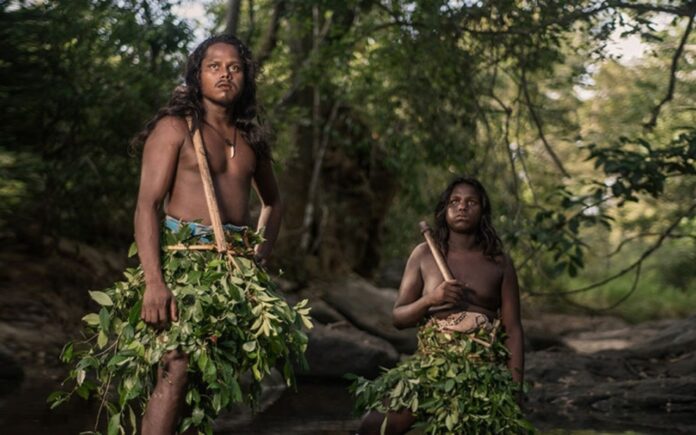[ad_1]
The island nation of Sri Lanka has a long history that winds down to prehistoric times. And this history is one of intrigue, vivacity and spectacle. Visitors to the island do not always encounter the indigenous people, nor are they familiar with their existence. Vedda or Wanniyala-aetto (in the aboriginal language) or Adivasi (in Sinhala) are considered by many to be the earliest known inhabitants of the island. Traditionally, they were forest dwellers who foraged, hunted and lived in close-knit groups in caves in the dense jungles. They have their language, history, religion and way of life. And today, we want to turn the spotlight on them and reveal all the fascinating facts you may have never known.
In the tradition
The Great Chronicles of Sri Lanka (Mahavamsa and Deepavamsa) narrate varied versions of the Genesis story of Veddas. The main story begins when Prince Vijaya, exiled from India, arrives on the island with his 700 companions in 543 BC, landing in Thambapanni, north of Sri Lanka, Vijaya’s men first encounter the Demon Queen Kuveni, regarded as a descendent of Ravana.
She takes his men captive but later releases them when Vijaya threatens to kill her. She pledges allegiance to Vijaya and helps him defeat her Yaksha tribe. They establish a kingdom where he becomes the ruler and her his consort. She gives birth to two children, a son and a daughter.
Eventually, Vijaya asks her to leave the kingdom as his people fear her, who is a ‘supernatural’ being. She leaves, taking her two children with her. She leaves them behind in the forest glades of Bambawa as she goes to meet her tribe. Her tribe sees her as a spy and a traitor and kills her. Her two children go on to become the first Veddas, trekking towards the southwest of the island.
Sub-groups of Vedddas
Dotted across Bintenne in Uva District, Anuradhapura District in the North Central Province, Hunnasgiriya hills in central Sri Lanka and coastal areas of the Eastern Province, there are several sub-communities of the indigenous people of Sri Lanka. Statistical estimations conclude that Veddas account for less than 1% of the national population.
Gal Veddas – those who live in caves in the forests
Gam Veddas – village communities who live in mud huts and grow crops using chena cultivation
Muhudu Veddas – those living in coastal villages on the Eastern coast of the island
Over the years, their habitats have shrunk, limiting them to places like Rathugala, Pol-lebadda, Dambana, Hennanigala, Laggala, Nilgala, Dalukana, Sorabora, Dimbulagala, Kukulagala, and Vakarai. Assimilation into mainstream society has diminished much of their population.
Their language, dress, religion and cultural practices have undergone varying degrees of hybridisation and creolisation to survive modernisation. However, they are still a distinct minority group on the island with a unique cultural identity.
Interest in the indigenous people has grown over the years due to tourism. Positive interactions have been made possible with Wild Glamping Gal Oya and Gal Oya Lodge offering accommodation to tourists close to indigenous communities.
Belief system
Their principal belief system is animism, which is spirits inhabit all objects, places and natural species. It is a religious tradition particularly prevalent among indigenous cultures worldwide. It involves the assertion spiritual beings are concerned with human affairs and are capable of helping or harming human interests. They also worship dead ancestors called nae yaku invoked for the game and yams. Veddas venerate Kataragama, a multi-faith spiritual site in southeast Sri Lanka. They believe its deity, Skanda, also known as Murugan, married one of their tribal girls named Valli.
Best place to interact with Veddas
Gal Oya National Park is one of the little-known national parks in Sri Lanka, situated southeast of the island. Its surrounding area is one of the last few places to meet and interact with the indigenous people. A Vedda chief may accompany you to show you the caves, medicinal plants and hunter-gatherer practices. Watch their mystic dance rituals, accompanied by traditional drum beats and chanting.
What’s so special about Gal Oya National Park?
Named after Gal Oya River, it is a historic as it is wild. The topography of the landscape is rich, varied and dramatic. Its elevation ranges from 30m to 900m. Granite hills, islands, thick verdant jungles, grasslands, river and gigantic reservoir furnish the landscape. It is the main catchment area for Sri Lanka’s largest reservoir – Senanayake Samudraya.
Have you seen herds of swimming elephants? Here is the place to come to see them. Leopards are also known to roam the park. Other wild cat species, like the Fishing Cat, Jungle Cat and Rusty Spotted Cat, also live in the park. Three deer species graze peacefully here. You might see mugger crocodiles basking in the sun on granite rocks. There are 150m species of birds. The area also has ancient monastic ruins, Rajagala and Buddhangala being the most notable.
Nilgala Protected Reserve is famous for its birds and rare floral and medicinal plants. Trekking to the top of Monkey Mountain will offer a 180-degree view of the rugged, forested valley below. Boat safaris are an excellent way to discover the many hidden gems of Gal Oya.
Culturally-rich indigenous encounters with Blue Lanka Tours
The Indigenous people of Sri Lanka are a cultural heritage and a link to a past we have long forgotten. We are thankful for their existence and hope responsible and sustainable tourism can preserve their culture, uplift them economically and bestow the social recognition they deserve. Join our off-the-beaten-track eco-tours to see the Vedda communities and dramatic wildernesses, enriched with meaningful interactions and deeper insights. Tailor-made for you and designed to offer unique perspectives and experiences, Blue Lanka Tours holidays elevate your travel tales. Who is ready to venture into the jungle with a tribal chief leading the way?
[ad_2]
Source link


